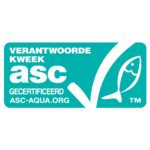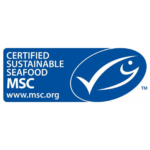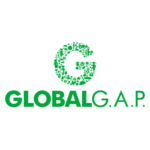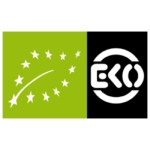Angler
Iceland grounds (FAO 27)
Bottom otter trawl, Demersal longlines, Gillnets
- Jan
- Feb
- Mar
- Apr
- May
- Jun
- Jul
- Aug
- Sep
- Oct
- Nov
- Dec
Deep down in the ocean is a world of strange creatures. Monkfish (Lophiidae) form a specific family of fish in the order of anglerfish. This type of fish can be found in the cold waters of the Arctic Ocean, Indian Ocean and the Pacific Ocean. This fish lives on the sea bottom on a depth of up to 1000 meter. Monkfish are anglerfish and possess a large head with a mouth full of long razor-sharp teeth.
The most important filament is the first, which is the longest, terminates in a lappet, and is movable in every direction. The angler is believed to attract other fish by means of its lure and then to seize them with its enormous jaws.
Only the larger sized individuals are of commercial interest.
The angler is a deep-sea fish that lives at depths up to 1000 m and get up to 2 m long. The species has very well-developed camouflage abilities; they can resemble the stones, sand or macroalgae of the habitat in which they are hiding. Anglers have a lure attached to their head which they use to lure small fish into their opened mouth, hence the name angler. This species can be found ranging from the Mediterranean Sea to Iceland. Most anglers are caught in shallower coastal waters in France, Spain and England.
Iceland grounds (FAO 27)
Bottom otter trawl, Demersal longlines, Gillnets
Atlantic Ocean, north-east (FAO 27)
Deelgebieden: Bay of Biscay, south
Demersal longlines, Gillnets
Atlantic Ocean, north-east (FAO 27)
Deelgebieden: west of Ireland
Gillnets
Atlantic Ocean, north-east (FAO 27)
Deelgebieden: Norwegian Sea
Bottom otter trawl, Beam trawl
Atlantic Ocean, north-east (FAO 27)
Deelgebieden: Norwegian Sea
Demersal longlines, Gillnets
Atlantic Ocean, north-east (FAO 27)
Deelgebieden: west of Ireland
Demersal longlines, Gillnets
Atlantic Ocean, north-east (FAO 27)
Deelgebieden: west of Ireland
Bottom otter trawl, Beam trawl

Fish with the ASC label is farmed in a sustainable manner.

Fish with the MSC label is caught sustainably.
This fish is not being overfished or is being responsibly farmed, with minimal impact on the environment.
This fish is a second choice. There are still some improvements to be made in this fishery or fish farm.
Do not buy this fish. It's being overfished or the way it's farmed or caught has a negative impact on the environment.

There is fish available of this species that is farmed or caught using high welfare standards.

GlobalG.A.P. certified farms are doing a step in the right direction in terms of sustainability. A few species with this label are getting a better score on the VISwijzer.

Organic standards are the strictest when it comes to fish feed. They also require certain measures for animal well-being.